Comments from the Chair
Politics
1) Local elections
Our political committee has completed a lengthy process of reviewing and interviewing candidates. The Alamo Group also co-sponsored a well attended and informative Mayoral Forum, held at Trinity University on March 9. Ivy Taylor did not attend, but there was lively discussion with candidates Ron Nirenberg and Manuel Medina. The event can be watched at Trinity U's Tiger Network on-demand. Click on "March 9 Mayoral Candidate Forum".
Please check out our endorsements for local elections (and make contributions) at TurnTexasGreen.org, the Lone Star Chapter’s Political Action Committee website. Our endorsements will only be meaningful if we provide meaningful support to candidates. They need our financial contributions (please follow link to contribute) and even more they need our active help. PLEASE!! We need volunteers to help these candidates, with organizing, phone banking, block walking etc!
2) Texas legislature
There are many bills under consideration in Austin. Please participate in our democracy to voice your support for our environment. Lone Star Chapter's Legislative Tracker has information on important bills along with petitions for strengthening environmental protections. You can also get involved by joining the Alliance for Clean Texas Supporter List.
Visit TX Legislature Online: Bill Search to access information about pending Texas legislation. It is vital for your representatives to hear from you. Visit Who Represents Me? to contact your State Rep and Senator. Finally, you can track bills of interest, and receive email alerts whenever actions are taken, by setting up a list on MyTLO.
Kelcy Warren, CEO of Energy Transfer (builders of Dakota and TransPecos pipelines) is on interim appointment to Texas Parks & Wildlife Commission. Senate approval is pending, and Sierra Club is opposed. Please tell them you oppose Warren’s nomination.
3) Washington
The Republican led House and Senate have passed into law HJR 69, which cedes management of wildlife in Alaskan wildlife refuges to the State of Alaska. Rescinding the U.S. Fish and Wildlife Service Alaska National Wildlife Refuges Rule will prevent FWS from effectively managing for sustainable populations of wolves, bears and other native carnivores on national wildlife refuges in Alaska. The state’s extreme predator control practices, like killing bears by bait, hunting from aircraft and killing wolves and pups in their dens using poison gas, directly contradict the mission of the Refuge System. We can expect similar attacks on wildlife and our wild lands nationally. Contact Congress and let them know how you feel.
Nuclear waste
Councilman Nirenberg continues to demonstrate thoughtful leadership on our issues, even as we have opposed his early support of Vista Ridge. He has obtained City Council support for a resolution and possible intervention against transport of High Level Nuclear Waste through San Antonio. This action will help protect San Antonio residents from potential catastrophic radiation releases that could render our city as uninhabitable as Fukushima. Bexar Couinty Commissioners also passed a resolution against this transport plan.
Climate action
City of San Antonio is embarking on a City wide process to develop a Carbon Action Plan (CAP) as part of SA Tomorrow’s Sustainability Plan. We support this effort and hope San Antonio will seek aggressive, but fully achievable goals for reductions in fossil fuel emissions by 2040 (many cities already have targets of 80% reductions). Please use this petition to tell the San Antonio Mayor, City Council and Office of Sustainability that you want them to take bold steps to address dangerous climate pollution.
National Sierra Club elections
Annual elections for our Board of Directors are happening now! All members are strongly urged to vote. The Club needs your vote, and good leadership depends on it. Please vote using this electronic ballot or call 1-866-720-4357 for assistance. Votes must be received by noon April 26, 2017.
by Terry Burns, M.D., Alamo Group Chair
Sustainability Planning
This month, our General Meeting presentation is by students in the graduate Urban and Regional Sustainability class at UTSA.
Tuesday, April 18th
6:30 p.m.
William R. Sinkin Eco Centro, 1802 North Main Avenue
Map
These students will, this year again, present their sustainability recommendations for San Antonio. The class is part of the Urban and Regional Planning Program within the UTSA College of Architecture, Construction and Planning. These graduate students have spent the semester reviewing sustainability issues as well as plans from various cities.
Based on their research and their knowledge of San Antonio, they have developed sustainability recommendations for our city. This has been an informative and lively program in the past and is expected to be again this year.
Anti-tree Bills Moving Through Legislature
March 30, 2017
It is important for Sierrans to resist the Legislature's war on trees. There are now 6 bills moving through committees that would curtail or strip local governments of their power to preserve trees.
Heritage tree destruction bill (SB 744)
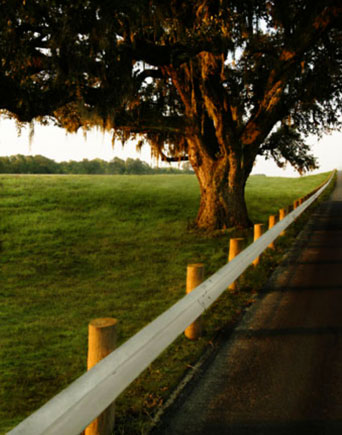
Posing the most imminent threat is Lois Kolkhorst's (R-Brenham) SB 744. It is headed to the Senate floor for a vote (3-30-17).
This legislation, which I call the "heritage tree destruction" bill, would slash the amount of mitigation developers must provide for excessive tree removal. Its effect would be to gut protections for old "heritage" trees and increase bulldozing of these trees for big box parking lots and mass-produced housing. SB 744 was written by the Texas Association of Builders.
It is likely the bill will pass the Senate and be heard in the House Committee on Urban Affairs. This is where our efforts should be focused (see How you can help below).
SB 744's House companion is HB 2052 by Dade Phelan (R-Beaumont). It's worth noting that neither Brenham nor Beaumont have tree preservation ordinances.
Sierrans to the rescue
Russell Seal, Terry Burns and Richard Alles testified against the bill at a Senate committee hearing March 20th. Thanks, in part, to their efforts, the sponsor made several improvements to the bill that will lessen its damage. You can watch them in action starting at 2:20:20 in this video.
The clearcutting bills
These bills enable mass clearcutting of trees (even giant heritage oaks).
- SB 782 by Donna Campbell (R-New Braunfels) & companion HB 2535 by Bill Zedler (R-Arlington)
- SB 898 by Paul Bettencourt (R-Houston)
- SB 1082 by Konni Burton (R-Fort Worth)
HB 2535 has been referred to the House Committee on Urban Affairs. On the Senate side, they all landed in the Committee on Agriculture, Water & Rural Affairs. None has been scheduled for a hearing, but bear in mind the Senate requires only 24 hours advance notice of committee hearings. These bills:
- Allow developers to clearcut trees and strip cities' authority to prevent such devastation.
- Create new rights for developers allowing them to demand financial compensation and exposing cities to lawsuits.
- Slash the amount of mitigation cities can require to compensate for tree removal. (Currently, cities may require developers to mitigate tree removal by planting new trees or paying into a tree-planting fund.) SB 1082 would prohibit mitigation fees altogether.
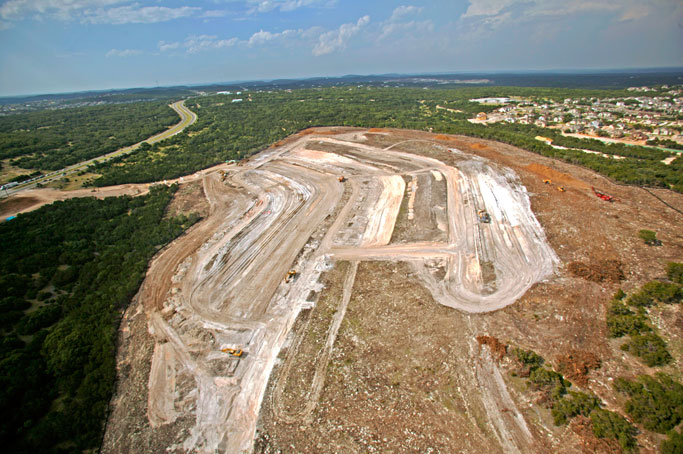
How you can help
It's important for citizens to let our legislators know these bills are highly unpopular. We have to show up at hearings, call and email, and strongly push back against these anti-tree, anti-Texas bills.
There is something on this list for everyone:
- Attend the hearings in Austin to speak in opposition to or register against these bills. The bill history pages linked above will list the hearing dates once they are assigned.
I recommend setting up email alerts at MyTLO (TX Legislature Online). Call me at (210) 494-2088, or send an email, if you would like a ride to a hearing. - Contact the members of the the House Committee on Urban Affairs in opposition to SB 744/HB 2052 & HB 2535.
- Contact members of the Senate Committee on Agriculture, Water & Rural Affairs in opposition to the clearcutting bills listed above.
- Contact your state Senator and Representative in strong opposition to these bills.
by Richard Alles, Forests/Trees contact, March 30, 2017
Adventures in China & Mongolia
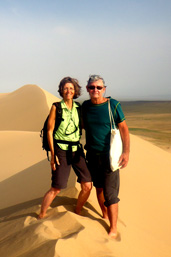
This month, our Lions Field event features Sierrans Alan Montemayor and Cheryl Hamilton. They will describe their 6-week trip to China and Mongolia with an emphasis on the rapid changes and challenges facing the peoples of these countries.
Wednesday, April 26th
6:30 p.m.
Lions Field Adult Center, 2809 Broadway @ Mulberry
Map
Alan Montemayor and Cheryl Hamilton are retired and love to travel to remote and interesting places, including all 7 continents and 57 countries so far. They travel mostly independently, using guided tours only where necessary to gain access to interesting areas.
Cheryl is a consummate internet travel agent and has booked itineraries of up to 3 months, finding the best deals in transportation, lodging, food and adventure experiences. Typical travel for Alan and Cheryl involves a complex mix of airplanes, buses, trains, subways, rental cars, bicycles, ferries, hiking, hotels, hostels, campsites, local food markets and grocery stores.
They visit some of the larger cities, but prefer to explore the countryside the majority of the time. Alan and Cheryl travel in a perpetual learning mode, examining the ecology, energy consumption, history, food and culture of many different areas.
Seen This One? Great Basin National Park
Great Basin is #4 in a Nature.com (Nature Conservancy) article, 10 Great National Parks You’ve Never Heard Of. It is located in eastern Nevada, barely west of the Utah state line, 150 mi SW of Salt Lake City, 180 mi NW of Las Vegas (as the crow flies), with the closest town being nothing worth mentioning (except to the locals). Just south of US-50.
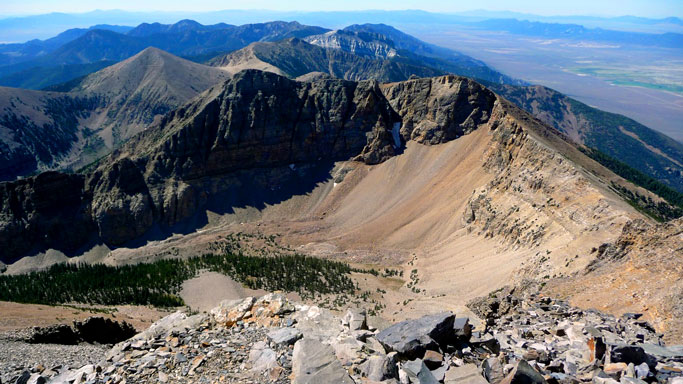
Various other ranges of the basin-and-range topography are visible on the horizon.
The park is comprised of 77,180 acres in the Great Basin Desert and is particularly notable for groves of bristlecone pines, Lehman Caves, and Wheeler Peak (13,065'). I visited in August 2010, climbed Wheeler Peak but missed out on the bristlecone pines as my feet hurt so much from the miles doing Wheeler, the route up which is mostly angular chunks of quartzite though otherwise a good trail. Obviously I must go back, there is so much I didn't see here.
Great Basin desert? Basin and range?
I found a copy of The Deserts of the Southwest by Larson, 1990, at a library book sale in Colorado. One of a series of at least five by Sierra Club, long out of print sorry to say. From this book, follows a good description of what basin and range is about. See the fourth picture below for an example further to the ones from the park. The Great Basin Desert is the largest of the four in the United States.
“The Great Basin [Desert], stretching irregularly from the Sierra Nevada Mountains on the west almost to the Rockies on the east, consists of a series of undrained basins, or bolsons, separated by generally north-south-trending mountain ranges. According to the borders one establishes for the Great Basin Desert, the number of the major bolsons varies, but exceeds 100. Mountain ranges are always in sight in this desert. Most are fifty to seventy-five miles in length and six to fifteen miles in width. Some rise over 10,000' to become islands rising from a sagebrush sea, studded with juniper, pinon and other conifers. The Great Basin Desert is the classic example of basin and range topography.”
Visiting
Here's the park newsletter. There are a bunch of campgrounds, all are above 7000' so summers are good, though then best to pitch your tent with afternoon shade! Only one campground is open year around, and winter conditions are variable; be sure to check with the park. The visitor center is only open summers.
In addition to Mt. Wheeler (8.6 mi, gain 2900') there are lots of other trails; here's the park webpage. The Bristlecone Trail is 2.8 mi, gain 600', to one of the four groves in the park. Further along this trail is a view of Wheeler Peak glacier, the southernmost glacier in the world, which is expected to disappear within 20 years due to warming. There are hikes to Baker and Johnson lakes, which can be combined as a loop including a high ridge between, 13.1 mi and gain 3290' (another reason why my feet hurt so much coming back from Mt. Wheeler the next day).
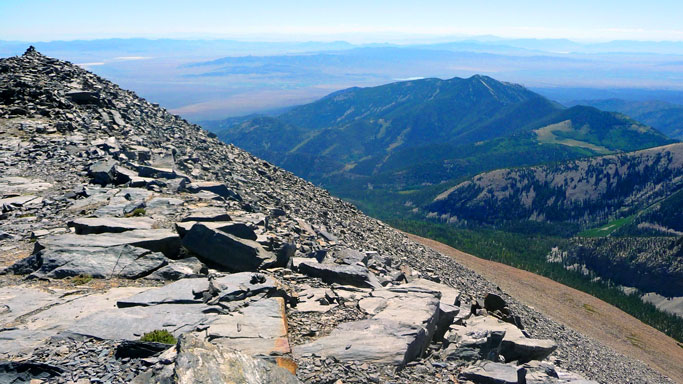
Further to the Bristlecone Trail: Bristlecone pines are among the oldest living organisms, and one in California is the oldest known living organism (other than colonies of clones, such as aspens).
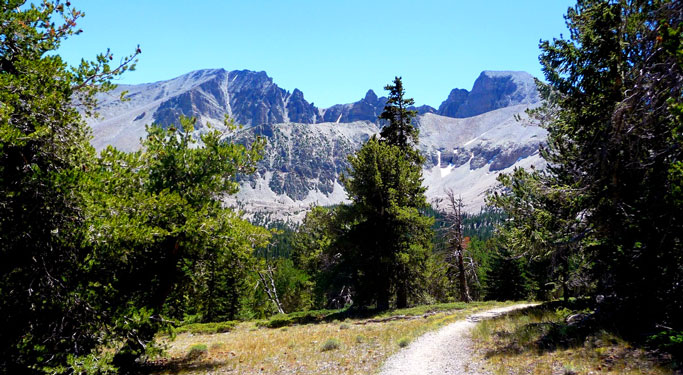
The true summit is on the right. The most easily accessed grove of bristlecone pines is along another trail to the left.
Driving US-50 across central Nevada is quite stupendous if you are interested in the Great Basin Desert and the seemingly endless succession of basin and range. The image below is typical. If you wish to drive this be sure to understand your fuel requirements and tank up before crossing; there is virtually no fuel or phone service in the center of the state.

Other national parks "you've never heard of"
Further to the Nature article mentioned above, in the January 2017 issue of this newsletter an article covered #2, Petrified Forest National Park and in September 2016 there was #1, Black Canyon of the Gunnison National Park. For #6, Capitol Reef National Park, see August 2016. #7, Guadalupe Mountains in Texas, was in February 2016 and #8, Great Sand Dunes in Colorado, in November 2015.
by Kevin Hartley, Alamo Group Outings leader
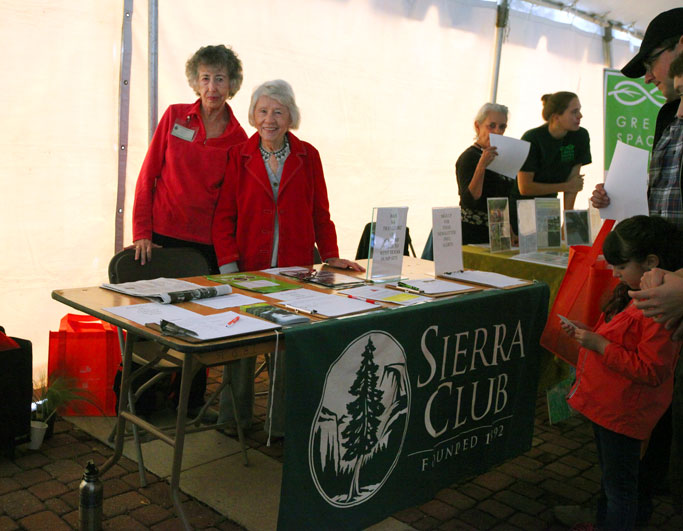
Food for Thought
Since the days of Aldo Leopold, we have understood that no species exists in a vacuum but rather survives one as a member of a complex but integrated biological community. ...
Our culture creates the paradoxical illusion that the human species is somehow separated from the natural world, but it is only a clever and complex illusion – we are ultimately as bound to the mud as the toad. Sadly, many fail to grasp this most obvious perspective. Now it is time for us to make a dedicated effort to correct some of the damage we have wrought upon the land, not merely because these are our 'natural resources' – a preposterously arrogant concept – or because as species it serves our best interest in the most important ways imaginable, but perhaps more significantly because the world is an inherently sacred place, more important than the raw material that feeds the mill of human society. This planet is our sole progenitor. The Earth is of absolute necessity, more important than the people who live on it.
By Joe Hutto, from The Light in High Places – A Naturalist Looks at Wyoming Wilderness, Rocky Mountain Bighorn Sheep, Cowboys and Other Rare Species. A fascinating, honest and introspective voyage through some of the toughest backcountry remaining in the continental United States, the Wind River and Absaroka Ranges of western Wyoming.
Also by Joe Hutto: Illumination in the Flatwoods, about raising a brood of wild turkeys, upon which was based the PBS Nature episode My Life As a Turkey, season premiere August 1, 2011. And Touching the Wild, about seven years researching mule deer, Nature premiere April 16, 2014.
by Alamo Group Outing Leader Kevin Hartley
Atascosa Residents Fight Frac Sand Mine
Ancient oak forest sustains a unique ecosystem
In northern Atascosa County, just a few miles south of San Antonio, sits 2,000 acres of beautiful ancient oak tree forest. The area has a very delicate and unique ecosystem, from being a sensitive recharge zone for the Carrizo/Wilcox Aquifer, to also being one of the last great oak tree belts in the area.
The live oak forest is replete with fauna that is unique to this place. The forest separates the Texas Hill Country in the north and the chaparral brush country of the south and, because of this, is rich in acorn production which in turn sustains large populations of quail, turkey, and whitetail deer. They also have bobcats, breeding populations of kangaroo rats, and other endangered species such as the Texas tortoise and indigo snake. It is also on top of the historic 1813 Battle of Medina battlefield site.
A small community tries to preserve its way of life
The self described rural residents of Atascosa County are finding themselves in a story that is as old as Texas itself; a struggle for the land. Most of the families that live here consist of stay-at-home wives and mothers, teachers, cattle ranchers, farmers, and horse enthusiasts/trainers. The rest are retired couples looking for a quiet and peaceful place to enjoy nature and a safe place to bring their grandchildren.
Now, a large frac sand mining operation and processing plant has come to town and it has set its sights on their small community. The Steele Family, local residents, say that the company seeking to mine, Sand Mining of Texas, has been quietly putting six month contracts on thousands of acres for the last year.
For the next 20 years, the company, according to their TCEQ air permit (144604), could produce an average 400 tons per hour of sand that has been cleaned and coated with chemicals. If they were to use industrial trucks (also mentioned in the TCEQ permit) to transport that sand, the family estimates that they could run up to 400 trucks a day to transport their product. To get this done they have tried to entice county officials with the prospect of jobs and revenue and have hired a high profile lobbyist. Frac sand mining is a relatively new type of industry in Texas and has hardly any regulations. In a lot of ways this operation is a test case that might pave the way for how the rest of Texas will be impacted in the future if more of these frac sand mines are opened.
A 2,000-acre disaster
The Steele Family says, “we have contacted the print press and the local news stations and some have been helpful but we feel we are losing this battle. The company will bulldoze 2,000 acres of beautiful oak trees and use holding ponds to dump chemically laced water from its operations, which borders a runoff creek. This a disaster in the making for about 80 families and the environment.”
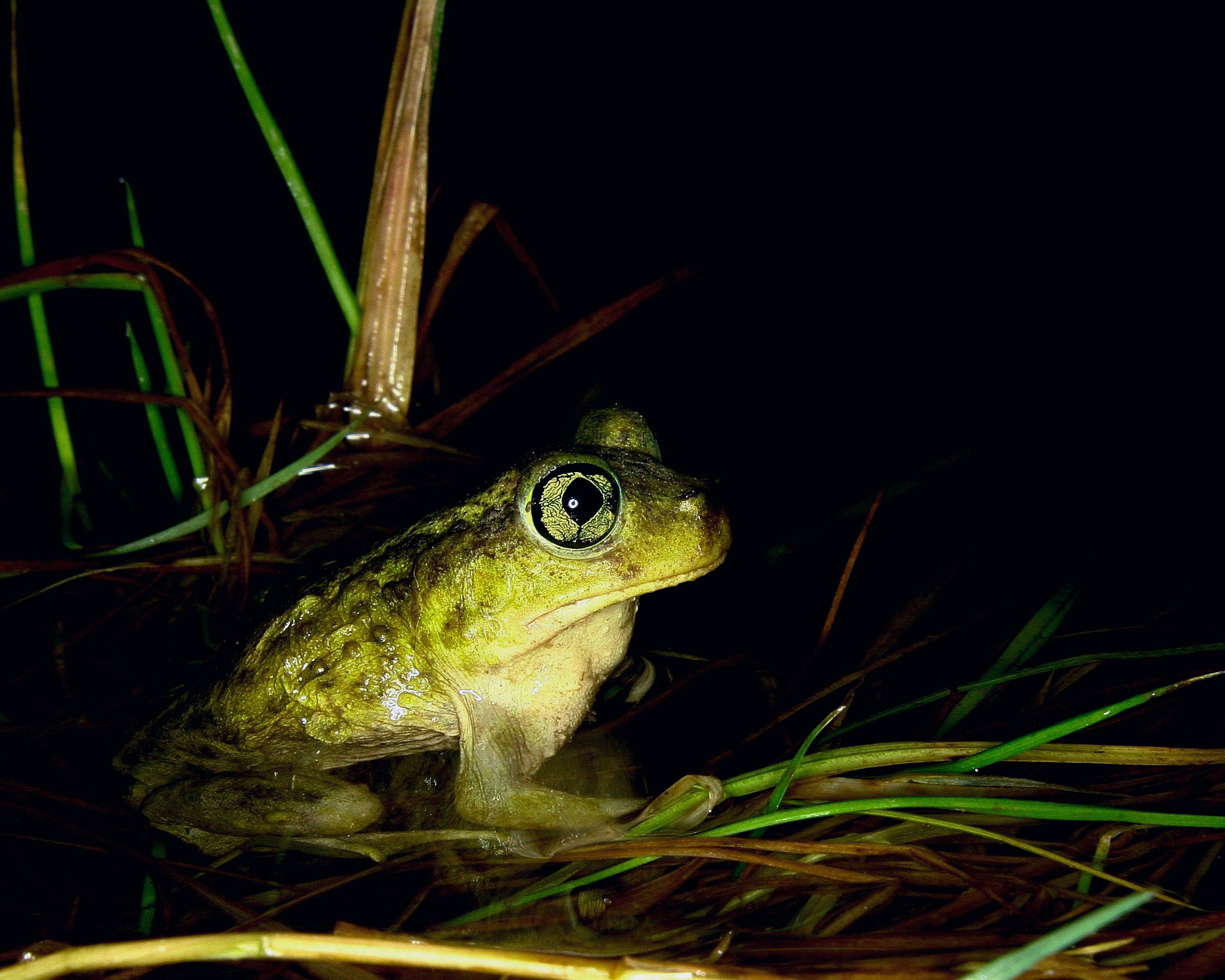

The Steeles say that the plant could pump about one million gallons a day from the aquifer, which, to their family, means that all the small private wells that people rely on for their water could run dry very quickly. They say that one of the biggest concerns from residents is breathing the silica dust, as the wind in south Texas blows constantly, and they have children coming on and off school buses within feet of where this plant is going to be.
Challenging a TCEQ permit
The residents have now organized in an attempt to try and halt the mining operation and processing plant. They have a Facebook page call Not Just Dust - Bruce Rd and have hired a law firm out of Austin to help them stop this company from getting permits from the Texas Commission on Environmental Quality (TCEQ).
Currently the status of the air permit at TCEQ is that it is now active, despite the large number of letters (200+) that have been sent by families in the area who are contesting the placement of the mine. They have a few state officials and county officials involved in trying to help but with the lack of regulation and, generally, industry (ahem...money) friendly state regulatory bodies, the Steele family worries about going against a company said to be investing up to $75 million in the project.
Birds of prey, waterfowl habitat to be bulldozed
“Our property along with many of our surrounding neighbors have ponds, which provide aquatic ecosystems throughout the area, which sustain vast populations of various water fowl and other migratory birds,” said the Steel Family member. “We also have many species of birds of prey and songbirds that use this area for nesting. Their claims of reclamation are a joke and the trees will be bulldozed and lost forever.“
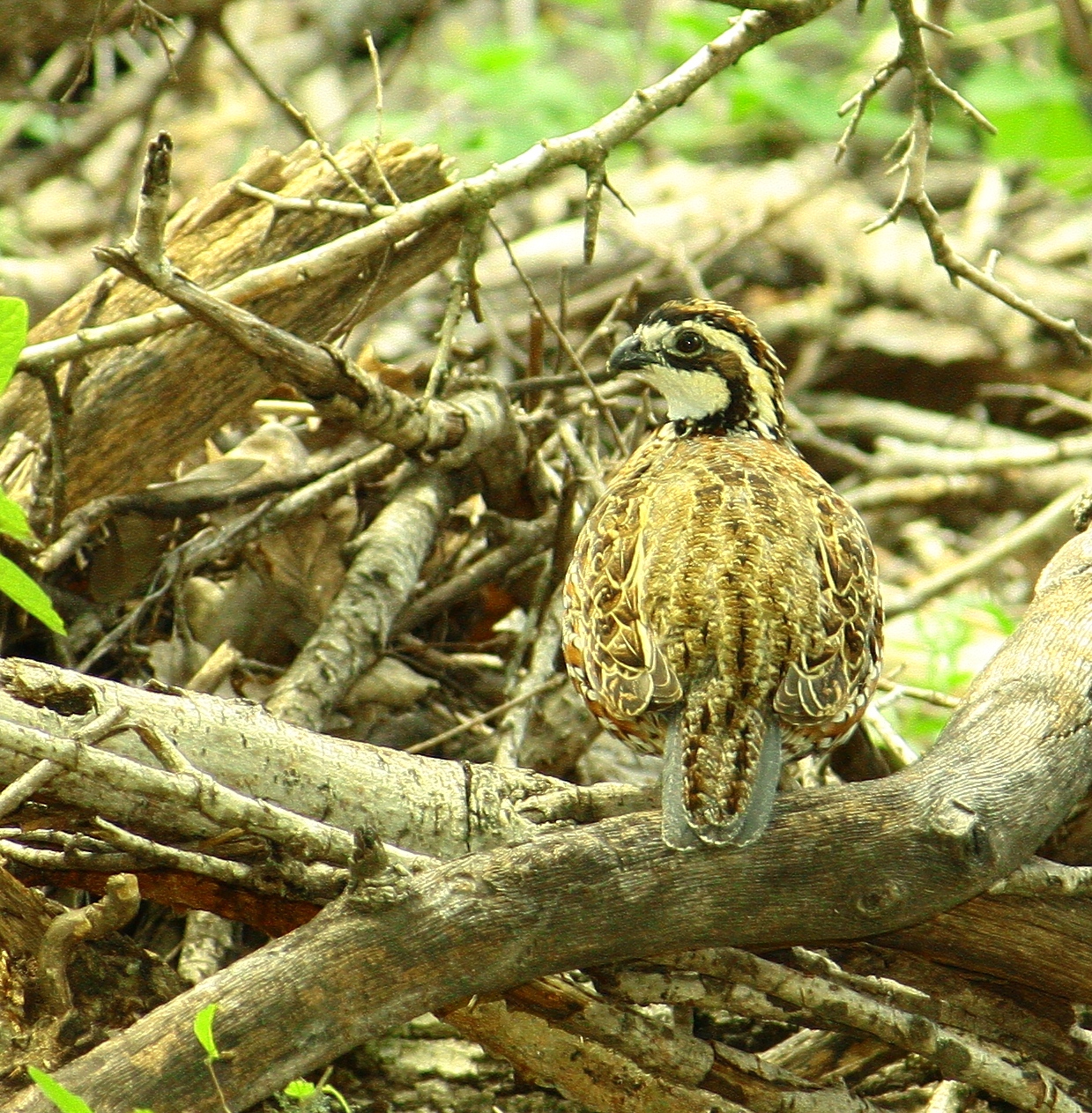
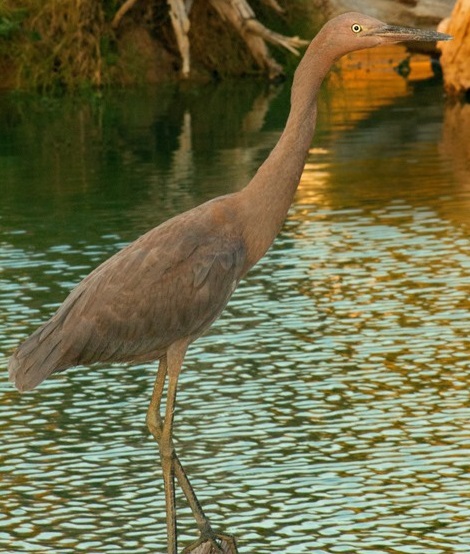
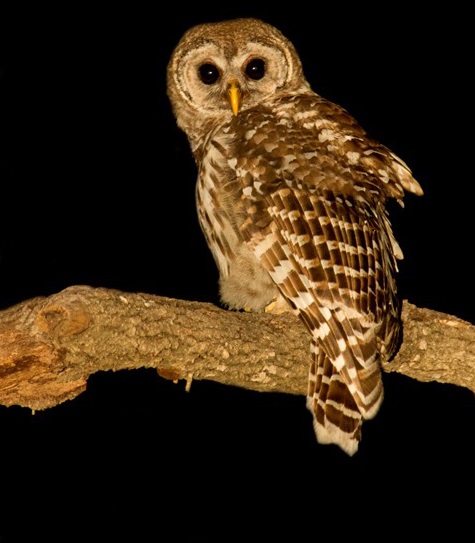
She continued, “There is plenty of land with our type of sand in this area that is sparsely populated, areas of basically cattle pasture; we ask if there has to be a mine why would they choose to locate one in the worst possible location that will damage the delicate environment here and the health of the people? The answer we have found is that this land was cheaper for them to put contracts on, because it did not have readily accessible access to a highway system.”
The amount of diverse wildlife and quality of life that could be damaged as a result of this project is truly heartbreaking. Share and help the Steele family get the word out.
by Olka Forster, Communications Coordinator, Lone Star Chapter of the Sierra Club

Outings: The Call of the Wild
Visit the Alamo Sierra Club Outings page on Meetup for detailed information about all of our upcoming Sierra Club Outings.

Bring Your Used Batteries to the General Meeting
Don’t throw those small batteries in the trash bin where they will end up in our landfills. Bring them to the monthly general meetings where we will have a container for you to place them in. Thanks to Gay Wright for coordinating this recycling effort.
The Alamo Sierran Newsletter
Richard Alles, Editor
Published by The Alamo Group of the Sierra Club, P.O. Box 6443, San Antonio, TX 78209, AlamoSierraClub.org.
The Alamo Group is one of 13 regional groups within the Lone Star (Texas) Chapter of the Sierra Club.
Keep your email address current!
Send updates to Loyd Cortez, providing your name, address and membership number (if known).
Changed your mailing address?
Have you moved? Let us know by sending your old address, your new address and your member number (look on the upper left corner of your mailing label) to: address.changes@sierraclub.org.
Go online for the latest news and events
 |